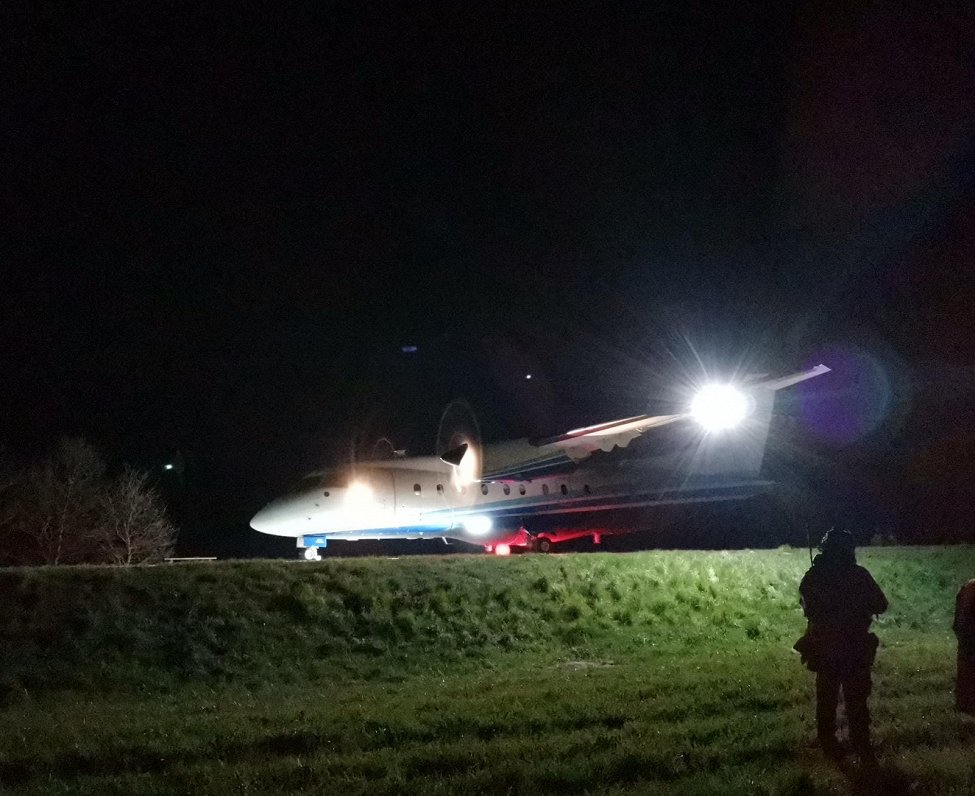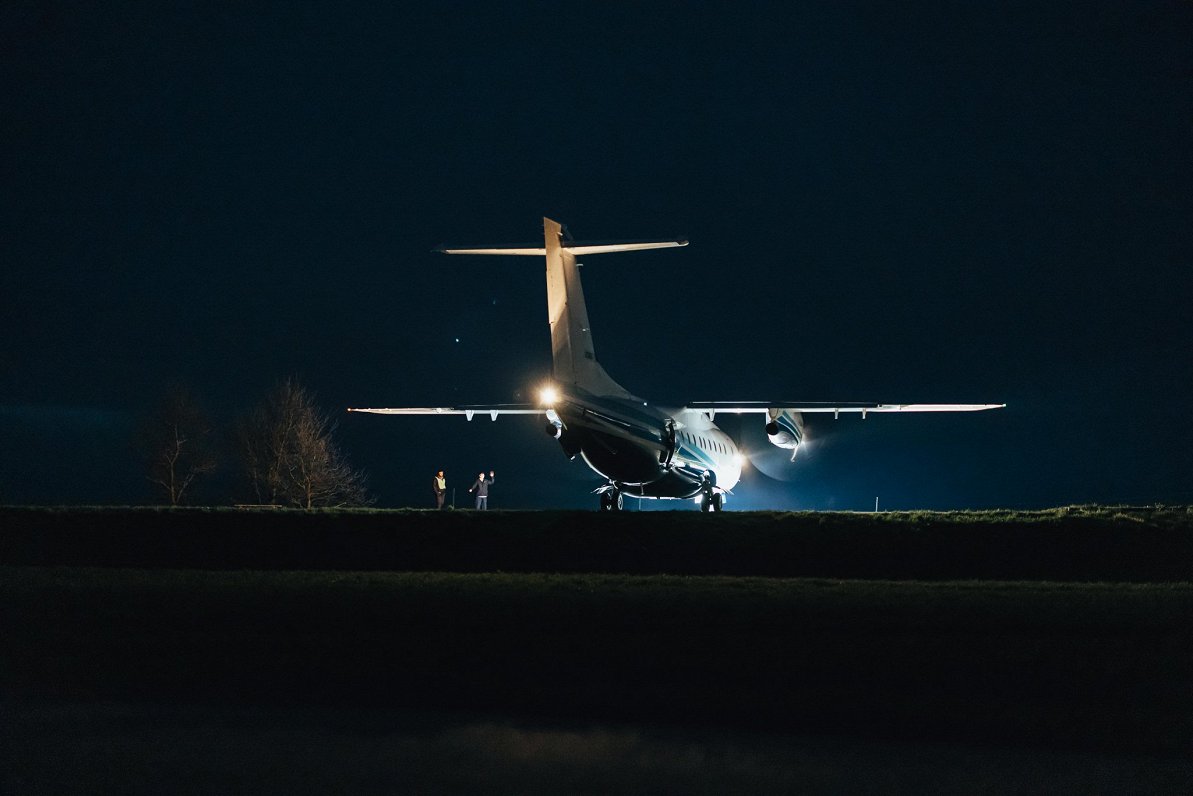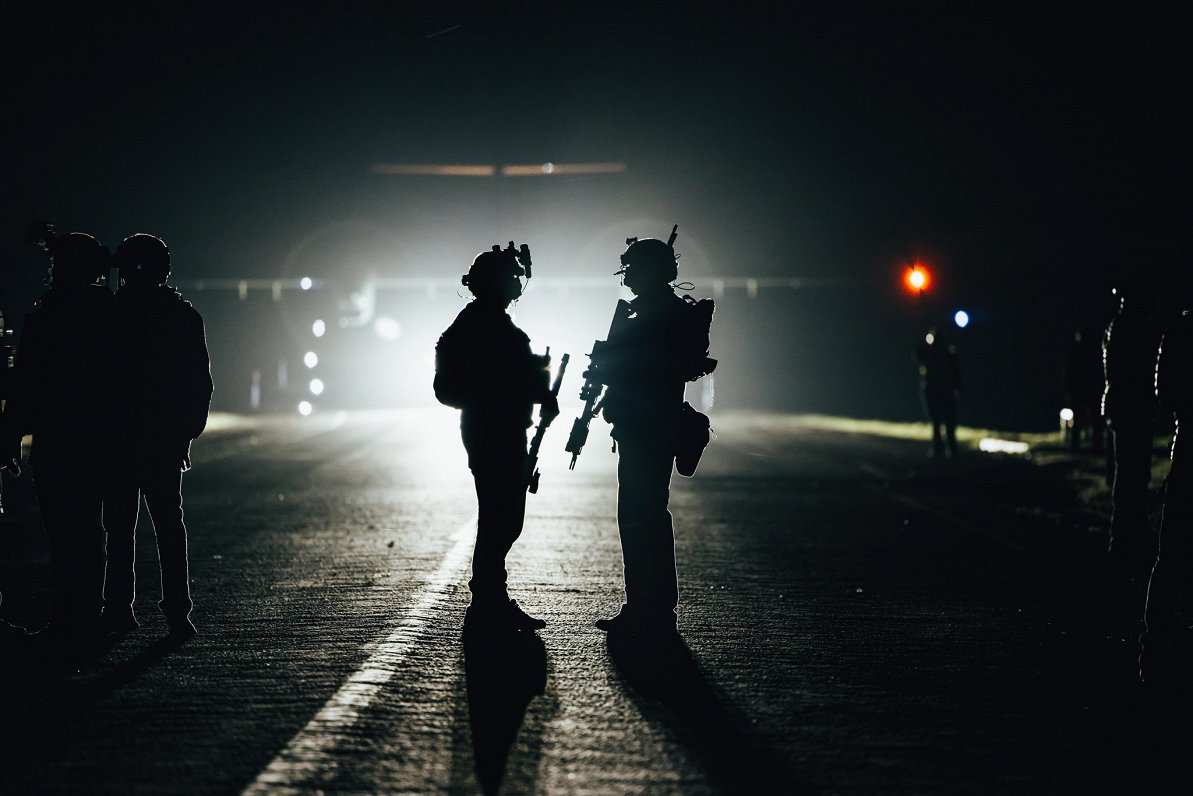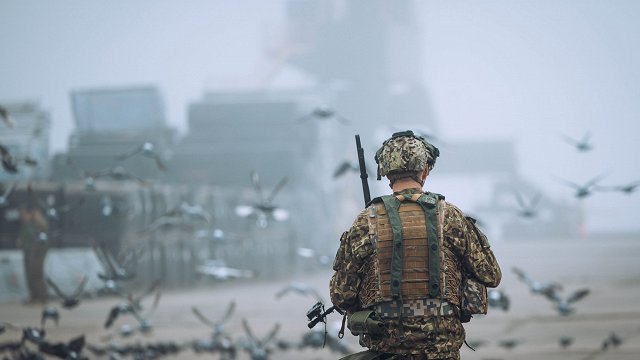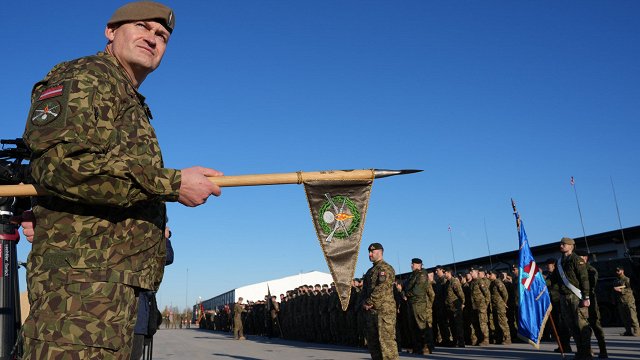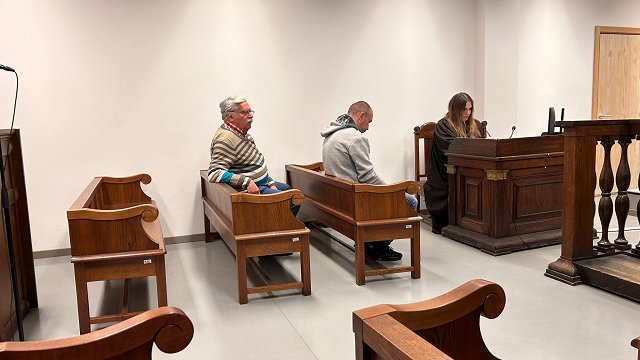In front of us is a highway (by international standards, just a road) near Biksti, in western Latvia. Behind us is a moderately sized dairy farm making hissing noises from time to time. It is luckily the first night of the year when the temperature doesn't drop below 10 C. There is a small bunch of us in the middle of a field – some in military gear, some with cameras and microphones – and we've pointed our eyes, ears, and equipment in the same direction.
It is the night from May 10 to May 11, and what we've been waiting for over the past – how many? – hours is a C-146 Wolfhound aircraft belonging to the U.S. Air Force Special Operations Command, about to land and take off on the narrow two-lane 'highway' A9. The plane landing takes place as part of the annual U.S. special operations forces training exercise 'Trojan Footprint'.
This is the first time a plane has landed on a highway in Latvia, a NATO air controller, speaking on the condition of anonymity, said. To determine the best location to be used as a makeshift airstrip, spanning 900 meters, around 2,000 kilometers of road had been checked.
"[We checked] probably every major primary and secondary road in western Latvia," said the air controller.
The noise hits first. It does not compare to a hard rock or even death metal show. It is deafening, but only at certain angles, providing an element of surprise every time it lands or takes off. That means four landings and takeoffs as, according to the air controller, "it is not often you get to close a highway in Latvia".
A nearby bus stop was used as a pocket to turn the aircraft around, something I would be very hesitant to do with my VW Golf in such a tight space. "It's gonna hit the ditch!" is exclaimed more than once. But it didn't.
The wingspan of the C-146 Wolfhound is 21 meters, whereas the width of the road is 8.5 meters. To facilitate the landing, several road signs were removed so the wings would not hit them. Only one casualty was recorded – the trashcan at the bus stop.
Video: National Armed Forces
The focus of Trojan Footprint 2022 in Latvia this year is urgent medical care and personal recovery, especially without sufficient resources. This particular mission had been ongoing for four days prior, including extracting a casualty from a dangerous situation, patient care with limited medicines, transport of the patient in the back of an ordinary vehicle, and transferring the patient to the aircraft on the highway. A specially designed mannequin was used as the 'patient' for the simulation.
A special operations surgeon from the U.S. said that the importance of such training was rising, as currently there is a potentially higher risk of mortality in battle than a decade or two ago. This is related to developing air assault capacities. "They can spot our medical tents fairly easily and also destroy them with enough precision," said the surgeon. That is why the Trojan Footprint 2022 training, among other things, focuses on the development of a medical care system adapted to the current battle situation.
Now, every time you pass Biksti on the A9 highway (which probably is not much more often than once in a decade) try, first, to turn your vehicle around smoothly, then imagine your vehicle is 20.98 meters long and 21.11 meters wide.
The cows were audibly glad to see us go at the end of the night.
